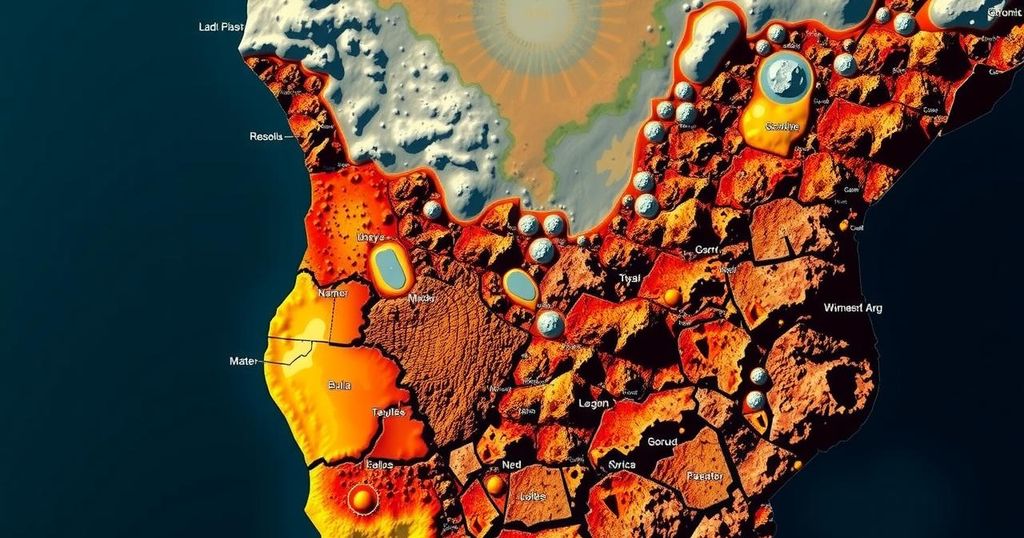Historic Drought Devastates Southern Africa, Threatening Millions with Starvation

Southern Africa is grappling with its worst drought in a century, affecting over 27 million individuals and causing widespread hunger, with 21 million children malnourished. Nations are declaring states of disaster due to failed crops and livestock losses, exacerbated by climate change and the El Niño effect. The crisis is anticipated to escalate until the next harvests in early 2024.
The Southern African region is currently facing an unprecedented drought, described as the worst in a century, resulting in significant humanitarian distress. Reports from the United Nations indicate that over 27 million individuals are suffering from the effects of this crisis, with 21 million children experiencing malnutrition. Nations including Lesotho, Malawi, Namibia, Zambia, and Zimbabwe have declared states of national disaster as the drought has annihilated crops and livestock. Angola and Mozambique are also heavily impacted, with further deterioration expected until the next harvest period in March or April of the coming year. WFP spokesperson Tomson Phiri emphasized the gravity of the situation, stating, “A historic drought – the worst food crisis yet – has devastated more than 27 million lives across the region. Some 21 million children are malnourished.” He pointed out that the onset of October marks the beginning of the lean season, during which the circumstances are anticipated to worsen every month, with failed crops and deceased livestock leaving children lucky to have one meal daily. Tens of millions in the region depend on rain-fed agriculture, which has suffered drastically due to the El Niño weather phenomenon that triggered below-average rainfall, compounded by the effects of climate change. A UN official noted in July that this year’s drought is unprecedented, damaging 70 percent of Zambia’s harvest and 80 percent in Zimbabwe, as per Lola Castro, the acting regional director for the WFP. The drought has also diminished hydropower production, leading to severe electricity shortages across Southern Africa. In response to these pressing challenges, both Namibia and Zimbabwe have implemented wildlife culls, including that of elephants, to alleviate food scarcity for the populace.
The current drought affecting Southern Africa is attributed to a combination of climate change and the El Niño weather phenomenon, which has brought about below-average rainfall. This situation highlights the vulnerability of sub-Saharan Africa, where numerous communities rely heavily on rain-fed agriculture. The implications of this crisis extend beyond immediate food shortages, threatening the livelihoods of millions and increasing the risk of malnutrition, particularly among children. Additionally, the drought has led to critical energy shortages due to decreased hydropower capacity, compounding the humanitarian crisis in the region.
In conclusion, the Southern African drought represents a severe humanitarian crisis, with millions at risk of starvation and malnutrition due to crop failures and livestock deaths. The combined effects of climate change and insufficient rainfall have triggered widespread food shortages and energy crises, necessitating urgent international intervention. Immediate and coordinated efforts are crucial to mitigate the consequences of this disaster and support the affected populations until the next harvest season.
Original Source: www.aljazeera.com






